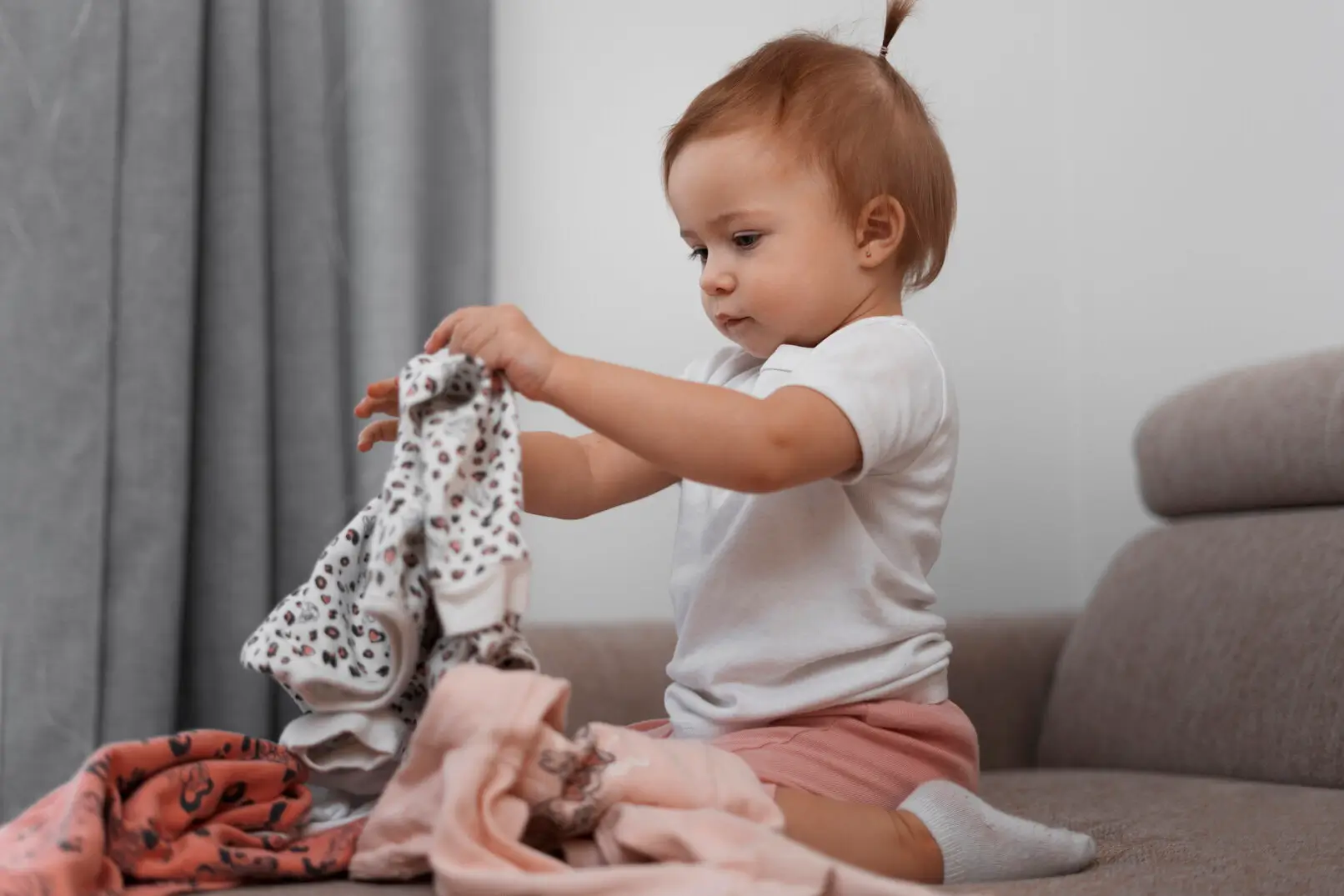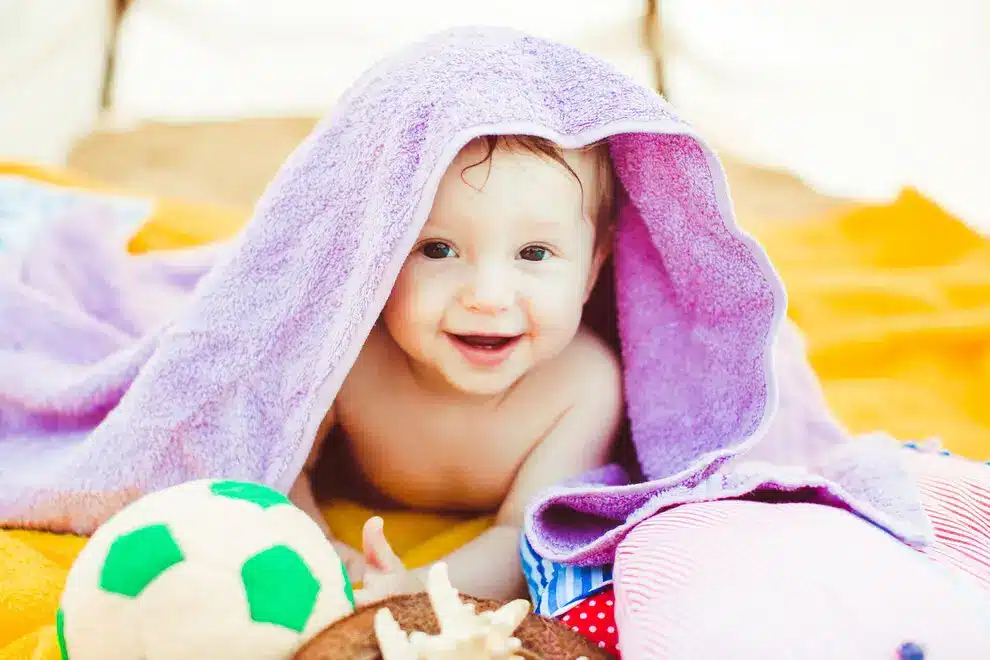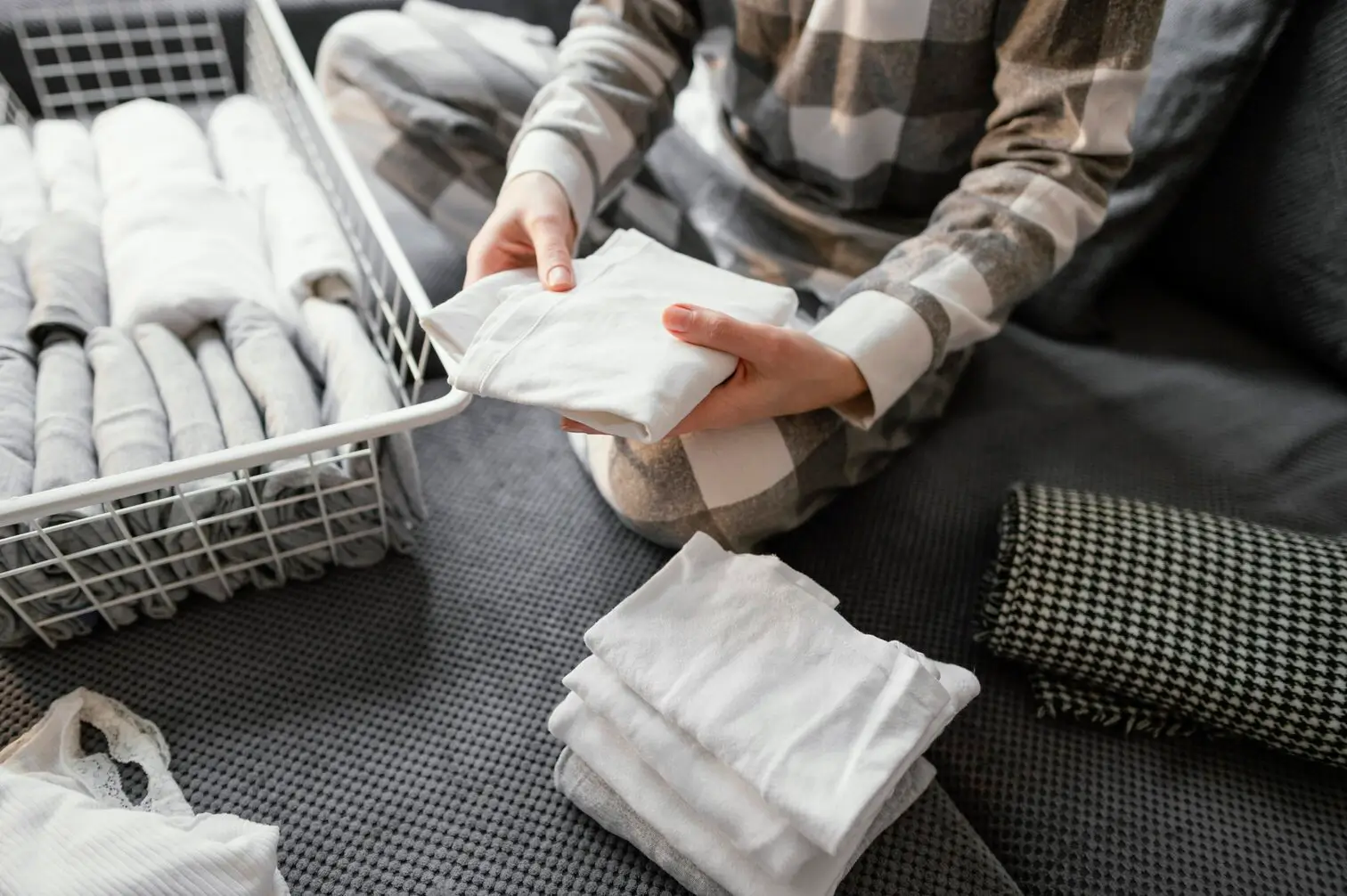How to dress a newborn in hot weather? Prioritize light-colored, loose-fitting clothing made from natural, breathable fabrics like cotton or linen. A single layer, such as a short-sleeve or sleeveless onesie, is often sufficient for a hot day to prevent overheating,
as babies cannot regulate their body temperature as effectively as adults. Always add a wide-brimmed sun hat when outdoors and ensure the baby is kept in the shade, especially between 11 a.m. and 3 p.m. when the sun is strongest.
Dressing Newborn in Summer brings unique challenges for parents across the USA, where heat waves can turn simple outings into concerns for comfort and safety. With rising temperatures, knowing how to dress a newborn matters more than ever. Between 2018 and 2023, extreme heat led to 69 infant deaths nationwide, highlighting the real risks involved. This guide offers practical steps that go beyond basics, helping you master dressing Newborn in Summer with confidence.
Parents often worry about overheating, especially in humid areas like the Southeast or dry heat in the Southwest. That’s why focusing on breathable materials and smart layering stands out as key.

Why Dressing Newborn in Summer Right Matters ?
Summer’s warmth invites family fun, but for newborns, it demands careful choices in clothing to avoid discomfort or worse. The American Academy of Pediatrics stresses single layers in temps over 75°F, aligning with how babies struggle with temperature control. Heat-related preterm births rise 16% during waves, showing why getting it right protects health.
Key Takeaways For Dressing Newborn in summer
- Breathable fabrics lead the way in Dressing Newborn in Summer, pulling moisture away to keep skin dry
- Light colors and loose fits reflect heat, making them essentials for daily comfort
- Sun hats and shade are non-negotiable for outdoor time, cutting UV exposure risks
- Regular checks on room temps and baby cues help dodge overheating pitfalls
- Sustainable choices add eco-value to your routine
Pre-Dressing Preparation: Assess Your Newborn’s Needs
Before picking outfits when learning how to dress a newborn, take stock of what your baby truly needs in the heat. Every newborn differs; some have sensitive skin prone to rashes, others adjust quickly. Start by noting traits like birth weight or any eczema, as these guide fabric picks.
Set up your home for success: Aim for 68-72°F indoors, per pediatric advice, to lower SIDS risks tied to warmth. Use humidity monitors evels over 60% call for dehumidifiers. Apps like WeatherBug offer UV alerts, helping plan dressing Newborn in Summer around daily forecasts.
Climate Preparation Guide
| Climate Type | Key Prep Steps | Why It Works |
| Humid (Southeast USA) | Add talc-free powders, opt for bamboo fabrics | Absorbs sweat, prevents rashes in sticky air |
| Dry (Southwest USA) | Layer light lotions, choose cotton blends | Maintains skin moisture without heavy clothes |
| Variable (Midwest USA) | Have adjustable layers ready | Handles sudden shifts, keeping the baby steady |
Watch parents demonstrate safe summer dressing techniques for newborns in different climates. Learn fabric choices, temperature control, and layer adjustments for your baby’s comfort.
Key Principles for Dressing Newborn in Summer
Natural materials shine when you dress a newborn. Cotton, muslin, and bamboo absorb moisture while letting air flow. Bamboo’s antibacterial edge cuts rash risks in humid weather. They wick sweat better than synthetics, validated by parent forums where bamboo tops polls for comfort.
| Fabric | Breathability Level | Eco Rating |
| Cotton | High | Good (organic options) |
| Bamboo | Very High | Excellent (sustainable growth) |
| Synthetic | Low | Poor (traps heat) |
Loose & Light Clothing
Tight fits trap heat when you dress a newborn, so go for loose rompers or singlets that allow natural cooling via evaporation. Pediatricians note this reduces overheating, especially since babies sweat less efficiently. Soft, seamless edges soothe tender skin.
Color Choice
Light shades reflect sun rays, keeping bodies cooler than dark ones that absorb heat. White outfits can drop perceived temperature by 5-10°F in direct light.
| Color | Heat Absorption | Best Use |
| White | Low | Every day, base layers |
| Pastels | Medium | Outdoor hats |
| Dark | High | Avoid in heat |
Building a Summer Wardrobe: Specific Items
Bodysuits
Short-sleeve or sleeveless versions form the base when learning how to dress a newborn. Watch this quick bodysuit tutorial for easy changes. Snap designs use organic cotton, breathable for hot naps. Grow-with-me cuffs extend use, saving money.
Rompers
Loose rompers breathe well, covering without restricting when you dress a newborn. Modular sets let you mix tops and bottoms, ideal for variable weather. Gender-neutral prints add fun.
Sun Hat
Wide-brimmed hats with UPF 50+ shield faces and chin straps keep them on. Pair with scarves for neck cover.
| Item | Material | Price Range (USA) |
| Bodysuit | Organic Cotton | $10-20 |
| Romper | Bamboo Blend | $15-25 |
| Sun Hat | UPF Fabric | $8-15 |
Outdoor Strategies for Dressing Newborn in Summer
Sun Protection
Limit direct sun for under 6 months. When you dress a newborn, use clothing over sunscreen. Carrier outfits with built-in hoods add layers without bulk.
Shade Solutions
Stroller shades or umbrellas block rays. Pop-up tents with vents suit beaches, keeping air moving while you properly dress a newborn for outdoor adventures.
Layering for UV Protection
| UV Level | Outfit Add-Ons | Risk Notes |
| Low | Base layer + hat | Minimal, but monitor |
| High | Full coverage + shade | Avoid prolonged time |
Indoor Comfort: Creating a Cool Haven
Home is where most time passes, so optimize for coolness. 68-72°F rooms reduce SIDS by aiding regulation. Minimal onesies for naps mimic natural cool when you dress a newborn for sleep.
Smart thermostats link to monitors, suggesting changes. Regional tweaks: Lighter in Southern humidity, layered in Northern variability.
Daily Timeline
- Morning: Light romper for play
- Midday: Check temps, adjust if needed
- Evening: Wind down with breathable swaddles
Important Considerations: Avoiding Overheating
Monitor for Overheating
One fewer layer than adults prevents overheating when you dress a newborn monitor closely in vehicles, where one child dies every 10 days from heat. Babies show overheating via flushed skin or fussing.
Room Temperature
16-20°C is ideal for sleep, cutting SIDS risks with ventilation. Fans help without a direct aim.
Check Temperature
Chest or neck tells the true story when you dress a newborn; cool hands are normal. If sweaty, remove layer; if chilly, add wrap.
Sustainability and Tech Innovations
Go green with organic cotton, grown without pesticides. Recycled linen cuts waste when you dress a newborn sustainably.
Smart fabrics alert to UV via apps, a step up from basics.
| Item | Pros | Cons |
| Cooling Vest | Regulates temp | Higher cost |
| UV Sensor Hat | Real-time alerts | Needs charging |
Special Scenarios: Tailored Advice
Premature Babies
Premies need gentler fabrics when you dress a newborn born early. Extra care with temperature regulation is crucial.
Multiples
Coordinated sets make it easier when you dress a newborn twin or triplet; efficiency matters with multiple babies.
Travel Tips
Pack wrinkle-free bamboo when traveling. Knowing how to dress a newborn on the go ensures comfort during trips.
Allergies & Eczema
Hypoallergenic lines work best. For eczema, loose bamboo soothes parents’ stories show relief when you dress a newborn with sensitive skin properly.
Common Mistakes & Myths
Myth: More layers protect better; they trap heat when you dress a newborn.
Avoid: Dark synthetics; they absorb rays and overheat babies.
Don’t: Overdress from worry. Skip heavy blankets, check tags for breathability before you dress a newborn.
Conclusion: Master Dressing Newborn in Summer
With these insights, dressing Newborn in Summer becomes second nature, fostering joyful moments. From breathable basics to tech tweaks, you’re equipped for safe adventures. Understanding how to dress a newborn properly ensures comfort and safety throughout the hot months.
FAQ
Q: What’s the best newborn summer hat for UV protection?
A: Wide-brimmed with UPF 50+, adjustable ones offer full coverage when you dress a newborn for outdoor time.
Q: How to dress a newborn for humid nights?
A: Light bamboo layers wick moisture, keeping them dry through sticky summer nights.
Q: Can eco-fabrics really help in Dressing Newborn in Summer?
A: Yes, sustainable bamboo breathes well and grows fast, cutting environmental impact while keeping babies cool.
Q: How many layers when you dress a newborn in summer?
A: One fewer layer than adults, typically a single light layer, like a onesie, is sufficient in hot weather.




